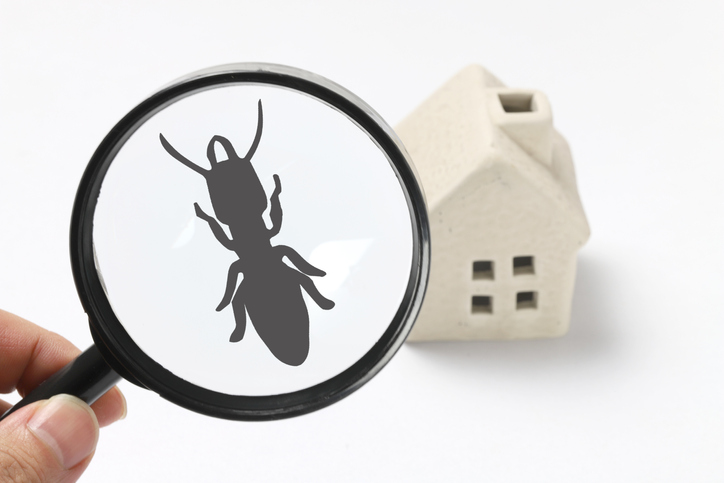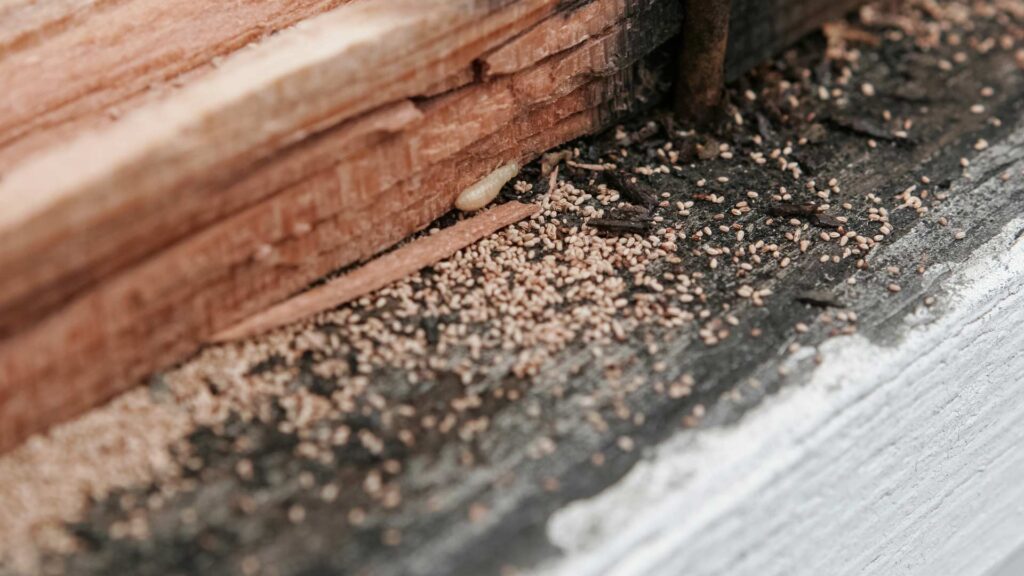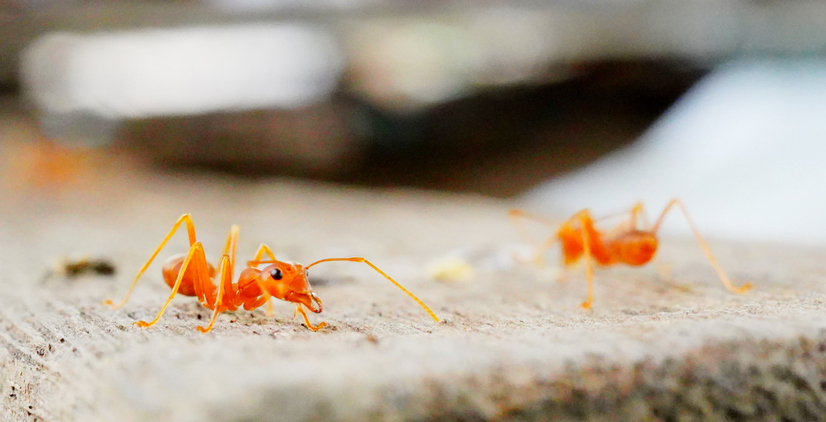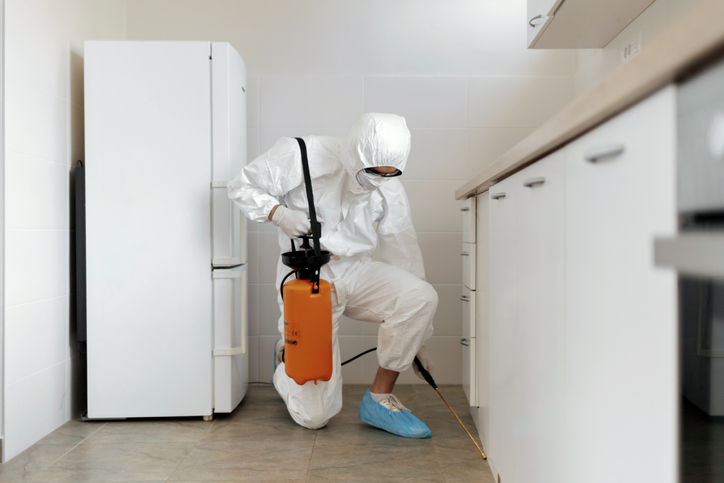What Are the Different Types of Termites?
Termites are typically classified into three main types: subterranean, drywood, and dampwood. Subterranean termites, the most common and destructive, live in soil and are known for damaging wood foundations and structures. Drywood termites infest dry wood, such as attic framings and furniture, and do not require soil contact. Dampwood termites thrive in damp, decaying wood and are less common in dry environments. Each type poses unique risks to homes and buildings, making understanding and identification crucial for effective prevention and treatment.

Understanding the Hidden Threat: A Homeowner’s Guide to Termites
Termites, often dubbed the “silent destroyers,” are a homeowner’s nightmare, causing over $5 billion in damage annually in the United States alone. These tiny pests can wreak havoc on a property, often undetected until the damage is significant. This article delves into the different types of termites, their impact on homes, and practical advice for homeowners to protect their investment.
In the quiet corners of our homes, beneath the surface of what appears to be sturdy walls and solid foundations, a silent war is being waged. Termites, small yet formidable pests, are at the forefront of this battle, often unnoticed until the damage they’ve caused becomes all too apparent. These creatures, though tiny, can undermine the very structures we call home, leading to costly repairs and significant structural damage. This threat, which lurks unseen, poses a serious challenge to homeowners, making understanding and early detection of termites not just a matter of home maintenance, but of preserving the safety and integrity of our living spaces.
Termites are more than just an inconvenience; they are a pervasive and persistent problem that affects millions of homes each year. In the United States alone, the annual cost of termite damage and control is estimated to be over $5 billion. This figure is a stark reminder of the significant impact these insects can have on our lives and finances. Unlike other home repairs that can be planned and budgeted for, termite damage often strikes unexpectedly, leaving homeowners with the daunting task of addressing both the destruction caused and the underlying infestation.
The complexity of dealing with termites stems from their nature and behavior. These insects are masters of concealment, thriving in hidden areas of our homes, from the foundation to the attic. Their ability to go undetected for long periods allows them to cause extensive damage before they are even discovered. The key to combating this hidden threat lies in understanding the different types of termites, their habits, and the signs of their presence. Armed with this knowledge, homeowners can take proactive steps to protect their homes and prevent the potentially devastating consequences of a termite infestation.
The Invisible Invaders: Types of Termites
Termites, often unseen but highly destructive, are a significant concern for homeowners. Understanding the different types of termites is crucial in identifying and addressing potential infestations effectively. Here’s an expanded look at the three primary types of termites: subterranean, drywood, and dampwood.
Termite Types At A Glance
Subterranean Termites
- Habitat: Live in soil; build large underground nests.
- Risk: Highly destructive; can compromise structural integrity.
- Identification: Mud tubes on exterior walls, damaged wood.
Drywood Termites
- Habitat: Infest dry wood like attic framings, furniture.
- Risk: Damage can be extensive before detection.
- Identification: Fine wood dust, hollow-sounding wood.
Dampwood Termites
- Habitat: Prefer damp, decaying wood.
- Risk: Common in homes with water damage.
- Identification: Presence in decaying wood, no need for soil contact.
Subterranean Termites
The Underground Menace, are the most common and arguably the most destructive type of termites found in homes. They live in underground colonies that can house millions of termites, including workers, soldiers, and reproductive individuals.
- Characteristics: These termites build distinctive mud tubes to provide moisture while they travel between their colony and food sources. They are primarily attracted to wood in contact with soil, making homes with wooden structures particularly vulnerable.
- Impact: Subterranean termites can cause extensive damage to the structural integrity of a building. They primarily feed on wood but can also damage paper, books, insulation, and even swimming pool liners and filtration systems.
- Geographical Spread: They are found in every state in the U.S. except Alaska. The Formosan termite, a particularly aggressive species of subterranean termite, is prevalent in the southern states and is known for its rapid rate of destruction.
Subterranean termites, the most common and destructive type of termites, are a significant concern for homeowners. Understanding their behavior, habitat, and the damage they cause is crucial in safeguarding homes against their silent but devastating impact.
Subterranean termites live in colonies underground, from which they build intricate tunnel systems to access food sources above ground. These colonies can house millions of termites, including workers, soldiers, and reproductive individuals. The workers, which are responsible for causing damage, are small, cream-colored insects that forage for food 24/7.
One of the most distinctive features of subterranean termites is their use of mud tubes. These pencil-sized tubes are constructed from soil, wood, and saliva and serve as protective tunnels for termites to travel between their colony and food sources. These tubes are often the first sign of a subterranean termite infestation.
Subterranean termites primarily feed on wood, but they can also damage paper, books, insulation, and even filtration systems and swimming pool liners. Their ability to go undetected for long periods allows them to cause extensive damage before they are discovered. In severe cases, the structural integrity of buildings can be compromised, leading to costly repairs.
A report from the National Pest Management Association highlighted a case where subterranean termites caused significant damage to a historical building, going unnoticed until the wooden structure of the roof began to fail.
Prevention and Control of Subterranean Termites
- Soil Treatment: Treating the soil around a home with termiticides can create a chemical barrier that deters termites.
- Bait Stations: These are placed around the home to monitor and reduce termite activity.
- Physical Barriers: Installing physical barriers, like sand or steel mesh, can prevent termites from accessing the home.
- Moisture Control: Since subterranean termites thrive in moist environments, controlling moisture through proper drainage and ventilation is essential.
- Regular Inspections: Annual inspections by qualified pest control professionals can detect early signs of termite activity.
Recent advancements in pest control technology have led to more effective and environmentally friendly methods to combat subterranean termites. For instance, researchers are exploring the use of biological control agents, such as fungi and nematodes, which show promise in controlling termite populations without the use of harmful chemicals.
Subterranean termites pose a significant threat to homes, often causing extensive damage before they are even detected. Understanding their behavior and habitat is key to effective prevention and control. Homeowners should employ a combination of moisture control, physical barriers, chemical treatments, and regular professional inspections to protect their homes from these destructive pests. With ongoing research and advancements in pest control, there are now more options than ever to effectively manage these invasive insects and safeguard our homes.
Drywood Termites
The Silent Wood Dwellers, infest dry wood, such as that found in attic framings, furniture, and hardwood floors. Unlike subterranean termites, they do not require contact with the soil.
- Characteristics: These termites are typically larger than their subterranean counterparts. They do not build mud tubes; instead, they create small holes in wood to push out their fecal pellets, leading to a distinctive sign of infestation.
- Impact: Drywood termites can go undetected for years and cause significant damage before being discovered. They are often spread through infested furniture or lumber.
- Geographical Spread: Drywood termites are commonly found in coastal, southern states and the southwestern United States, where the climate is warmer.
Drywood termites, a distinct species in the termite family, present unique challenges and risks to homeowners. Unlike their subterranean counterparts, these termites do not require contact with soil, making them a particularly insidious threat as they can infest any part of a home with dry wood.
Drywood termites typically infest dry, undecayed wood, including structural timber, furniture, and hardwood floors. They are often introduced into homes through infested furniture, picture frames, or other wooden items. Unlike subterranean termites, they do not build mud tubes but live entirely within the wood they consume. This behavior makes them harder to detect, as they leave fewer visible signs of their presence until significant damage has occurred.
Identifying drywood termites involves looking for specific signs. These termites expel their feces, which appear as small, hexagonal pellets, often found beneath infested wood. Homeowners might also notice shed wings from termite swarmers, typically found near window sills and doors. Since drywood termites live within the wood they consume, hollow-sounding wood when tapped can be a telltale sign of their presence.
The damage caused by drywood termites can be extensive. They can hollow out wooden structures, weakening them from the inside. Over time, this can lead to structural failure. Furniture and other wooden items can also be irreparably damaged. In severe cases, the cost of repairs can be substantial, as entire wooden components may need replacement.
Control and Management of Drywood Termites
Managing drywood termites can be challenging due to their discreet nature. Here are some effective strategies:
- Fumigation: For severe infestations, whole-house fumigation may be necessary. This process involves enveloping the house in a tent and introducing a gas that penetrates all woodwork, effectively eliminating the termites.
- Localized Treatment: For smaller infestations, localized treatments such as injecting insecticides directly into the infested wood can be effective.
- Preventive Measures: Preventing drywood termite infestations involves regular inspections of wooden structures and furniture. Before purchasing second-hand furniture, inspect it thoroughly for signs of termite infestation.
- Wood Treatments: Applying borate-based products to wood can deter drywood termites, as it poisons the wood while being safe for humans and pets.
Drywood termites pose a significant threat to wooden structures and items within homes. Their ability to live and thrive in dry wood without soil contact makes them a formidable pest. Homeowners need to be vigilant, regularly inspect their homes, and take preventive measures to protect their property. In cases of infestation, professional pest control services are often necessary to effectively eradicate these pests and prevent future infestations.
Dampwood Termites
The Moisture Lovers, thrive in wood with high moisture content. They are typically larger than other termite species.
- Characteristics: These termites do not usually infest structures unless there is a significant moisture problem. They do not require soil contact and do not build mud tubes.
- Impact: Dampwood termites are less likely to infest homes than the other types but can cause damage in homes with existing moisture issues, such as leaks or poor drainage.
- Geographical Spread: They are commonly found in the Pacific Northwest, the coastal areas of California, and the southeastern United States.
Dampwood termites, while less commonly discussed than their subterranean and drywood counterparts, represent a unique and significant threat to certain homes, particularly those in humid or coastal regions. Understanding the behavior, habitat, and potential risks associated with dampwood termites is crucial for homeowners in susceptible areas.
Dampwood termites thrive in high-moisture environments. They are typically found in logs, stumps, and dead trees, but they can also inhabit structures where wood has become excessively moist. This moisture is often due to contact with the soil, leaks, or poor drainage. Unlike subterranean termites, dampwood termites do not require soil contact, but they do need a significant amount of moisture in the wood they infest.
Dampwood termites are larger than other termite species, with bodies that can grow up to 1 inch in length. They are often characterized by their reddish-brown color. The presence of dampwood termites can be identified by their fecal pellets, which are larger and have a smoother surface compared to those of drywood termites.
While dampwood termites are less likely to infest buildings than other types, they can cause severe damage when they do. Homes with untreated wood in contact with the ground or with chronic moisture problems are at risk. These termites can silently destroy wooden structures, leading to costly repairs and structural failures.
Preventing Dampwood Termite Infestation Involves Controlling Moisture
- Eliminate Wood-to-Ground Contact: Ensure that wooden structures, such as decks and porches, have proper barriers from the soil.
- Repair Leaks Promptly: Fix leaking pipes, roofs, and gutters to prevent wood from becoming damp.
- Improve Ventilation: In areas like crawl spaces and attics, adequate ventilation can reduce humidity and moisture accumulation.
- Regular Inspections: Especially in damp environments, regular inspections for signs of dampwood termites can catch infestations early.
Dampwood termites play a vital role in their natural habitats, aiding in the decomposition of dead trees and recycling nutrients back into the soil. However, when they invade homes, they become pests that need to be managed responsibly. Homeowners should seek environmentally friendly pest control options that effectively address infestations without causing undue harm to the surrounding ecosystem.
Dampwood termites, though less common, pose a real threat to homes in moist environments. By understanding their behavior and habitat, homeowners can take proactive steps to prevent infestations. Regular inspections, moisture control, and environmental awareness are key to protecting your home from these moisture-loving invaders.

Comparing the Types of Termites
| Feature | Subterranean Termites | Drywood Termites | Dampwood Termites |
|---|---|---|---|
| Habitat | Underground colonies, often near wood-soil contact | Dry wood such as attic framings and furniture | Damp and decaying wood, often in areas with high moisture |
| Colony Size | Millions of individuals | Smaller colonies compared to Subterranean | Typically smaller than Subterranean |
| Identification | Build mud tubes for moisture while traveling | Larger in size, create small holes to push out fecal pellets | Larger than other species, no mud tubes |
| Signs of Infestation | Mud tubes on exterior walls, damaged wood, hollow sounds in wooden structures | Fecal pellets near wood, hollow-sounding wood, damaged wood | Wood damage in moist areas, less common in homes unless there’s significant moisture |
| Geographical Spread | Found in every U.S. state except Alaska. Formosan termites prevalent in the South | Common in coastal, southern states, and the southwestern U.S. | Pacific Northwest, coastal areas of California, southeastern U.S. |
| Typical Damage | Can severely damage structural integrity, including wood, paper, and insulation | Slow but significant damage to wooden structures and furniture | Damage in homes with moisture problems, less common but can be severe in affected areas |
| Prevention Tips | Reduce wood-to-soil contact, ensure proper drainage, regular inspections | Inspect and quarantine old furniture, maintain dry conditions in homes | Address moisture issues promptly, regular inspections in damp areas |
Early Detection and Prevention: Safeguarding Your Home Against Termites
The battle against termites begins with early detection and prevention. Understanding the signs of termite activity and taking proactive steps can save homeowners from costly repairs and structural damage. Here’s a deeper look into effective strategies for early detection and preventive measures.
Early detection hinges on recognizing the subtle signs of termite presence. These include:
- Mud Tubes: Subterranean termites build mud tubes to travel between their soil home and food sources. These pencil-sized tubes are often found near the foundation of a house.
- Hollow or Blistered Wood: Termites consume wood from the inside out, leaving a thin veneer of timber or paint. Tapping on wood that sounds hollow or feels blistered can indicate termite activity.
- Discarded Wings: After swarms, typically in spring, termites shed their wings. Finding piles of wings near windowsills or doors is a telltale sign of termite presence.
- Frass: Drywood termites leave behind wood-colored droppings known as frass. Finding these tiny pellets is a clear indication of drywood termite infestation.
Preventing termites involves both environmental adjustments and structural safeguards:
- Moisture Control: Termites thrive in moist environments. Repairing leaky faucets, water pipes, and AC units is essential. Ensure proper drainage away from the house foundation and maintain gutters and downspouts.
- Wood-to-Soil Separation: Wood that touches the ground is an open invitation for termites. Maintain an 18-inch gap between soil and any wood portions of your home. Use concrete supports or metal stands for wooden structures like decks or porches.
- Sealing Entry Points: Cracks in the foundation, gaps around utility lines, and openings around windows and doors should be sealed to prevent termite entry.
- Regular Inspections: Annual inspections by a licensed pest control professional can catch signs of termite activity early. These experts can identify potential risk areas and provide tailored solutions.
- Landscaping and Storage Practices: Keep firewood, lumber, and paper away from the foundation or crawl space. Trim trees and shrubs to prevent them from touching the house, as they can provide a pathway for termites.
For high-risk areas or as an added layer of protection, homeowners might consider:

- Termite Bait Stations: These are installed around the perimeter of a home to monitor and control termite populations.
- Chemical Barriers: Non-repellent termiticides can be applied around the foundation of the house, creating a barrier that kills termites upon contact.
- Building Materials: Using termite-resistant materials in construction, such as treated wood, can deter termite infestation.
Awareness and education are critical in termite prevention. Homeowners should stay informed about termite habits and threats. Participating in community pest management programs and staying abreast of local termite activity can also be beneficial.
Early detection and prevention are key to protecting your home from termites. Regular inspections, environmental management, and structural maintenance form the cornerstone of effective termite prevention. By staying vigilant and adopting these practices, homeowners can significantly reduce the risk of termite infestation and ensure the longevity and safety of their homes.
-
Best OverallSave $50 on your first recurring service today with code GET50
-
Best for TermitesSave $50 on pest control services with code SAVE50 at checkout
-
Best for Bed BugsGet a free estimate on pest control services for your home
-
Best for Wildlife RemovalCall For A Fast & FREE Phone Estimate Today
-
Best for Natural TreatmentGet $100 Off Your Termite Treatment Service
Practical Homeowner Tips
For homeowners, the battle against termites is ongoing and requires a multifaceted approach. Beyond the basic steps of reducing moisture and sealing entry points, there are several additional strategies to consider.
Landscaping and Wood Storage: Be mindful of how you manage the landscape around your home. Keep shrubbery and tree branches trimmed away from the house, as termites can use these as bridges to access your home. Similarly, store firewood, lumber, or paper away from the foundation or crawl space. Elevate these materials off the ground to prevent termites from using them as a stepping stone to your home. Additionally, consider using termite-resistant wood for decks, fencing, and other outdoor structures.
Ventilation and Sunlight: Ensure your home is well-ventilated, especially in areas like basements, attics, and crawl spaces. Termites thrive in dark, damp environments, so improving airflow can deter their presence. Use dehumidifiers in chronically damp spaces and ensure that vents are not blocked. Allowing sunlight into areas where termites are likely to colonize can also be an effective deterrent, as these pests prefer darkness.
Professional Assessments and Treatments: While DIY methods can be helpful, professional termite treatments often provide more comprehensive protection. Pest control professionals can offer tailored solutions based on the specific type of termite and level of infestation in your home. They can also provide regular monitoring and maintenance to ensure that any new termite activity is promptly addressed. Investing in professional termite control is a wise decision for long-term home maintenance and can save significant costs and stress in the future.
Termite Prevention Tips
Reduce Moisture
- Fix leaks immediately.
- Ensure proper drainage around the foundation.
- Use dehumidifiers in damp areas like basements.
Wood-to-Ground Contact
- Maintain at least an 18-inch gap between soil and any wood portions of your home.
- Use concrete bases for wooden posts.
Regular Inspections
- Schedule annual inspections with a certified pest control expert.
- Be vigilant for signs of termite activity.
Seal Cracks and Openings
- Regularly inspect and seal any cracks in your home’s foundation.
- Check around utility lines and pipes entering your home.
Store Firewood and Mulch Properly
- Keep firewood at least 20 feet away from your home.
- Avoid using wood mulch directly against your home’s foundation.
The Hidden Impact
The impact of termites on homes extends far beyond mere structural damage. These pests silently eat away at the integrity of a building, often going unnoticed until the damage is extensive and costly. A study by the National Pest Management Association revealed that individual homeowners could face thousands of dollars in repairs, with termite damage often not covered by standard home insurance policies. This financial burden can be particularly heavy for families who discover termite damage too late, leading to not only costly repairs but also a significant decrease in their home’s market value.
Beyond the financial implications, the presence of termites can have a profound psychological and emotional impact on homeowners. Living in a home infested with termites can create a sense of insecurity and discomfort, knowing that the very foundations of one’s home are under threat. In extreme cases, the stress and anxiety associated with termite infestations have led to strained family relationships and a decreased quality of life. Homeowners often report feelings of violation and helplessness, compounded by the invasive nature of termite extermination processes.
Furthermore, termite damage is not just a personal issue but a community concern. In neighborhoods, particularly in termite-prone areas, widespread infestations can lead to a collective decrease in property values and aesthetic appeal. This communal impact underscores the importance of awareness and collective action in termite prevention and control. By understanding the hidden impacts of termite damage, homeowners can better appreciate the necessity of proactive measures and regular inspections to protect not only their homes but also their financial and emotional well-being.
The Bigger Picture
Termites are not just a household problem but an environmental concern. Research indicates that termites contribute to carbon dioxide emissions when they digest cellulose. This highlights the importance of effective termite management not only for home safety but also for environmental health.
Termites, though small, pose a significant threat to homes and the environment. Understanding the types of termites and their behavior, combined with proactive measures, can help homeowners safeguard their properties.
The battle against termites is not just about safeguarding our homes but also about understanding and mitigating their broader environmental impact. These tiny pests, while a significant threat to our dwellings, play a complex role in our ecosystem. Their ability to break down cellulose contributes to soil health but also to carbon dioxide emissions, a factor that cannot be overlooked in today’s climate-conscious world.
For homeowners, the fight against termites is a continuous one. It’s not just about the immediate steps taken to rid a home of an infestation or to prevent one. It’s about adopting a mindset of vigilance and proactive care. This includes understanding the specific risks associated with the type of termite prevalent in their area and tailoring their prevention strategies accordingly.
Regular home maintenance plays a crucial role in termite prevention. This involves not only fixing leaks and ensuring proper drainage but also involves regular checks of the home’s foundation, attic, and other wooden structures. Homeowners should be educated about the signs of termite infestations, such as the presence of mud tubes, soft wood that sounds hollow when tapped, and visible termite swarms.
Moreover, professional inspections should not be viewed as an unnecessary expense but as a critical investment in the home’s longevity and safety. Pest control experts equipped with the latest technology and knowledge can offer insights and solutions that go beyond the capabilities of the average homeowner.
Beyond individual actions, there is a need for broader community awareness and action. Neighborhoods can work together to address common termite attractants, such as shared green spaces, community gardens, and local woodlands. Public education campaigns can also play a vital role in raising awareness about termite prevention and control strategies.
In the larger environmental context, research into eco-friendly termite control methods is vital. As our understanding of termites’ role in the ecosystem grows, finding ways to manage them without harming the environment becomes increasingly important. This includes exploring natural predators, biological control agents, and less toxic chemical treatments.
In essence, the fight against termites is multifaceted, involving individual vigilance, community action, and ongoing research and innovation. By approaching termite control with a holistic perspective, we not only protect our homes but also contribute to the health of our environment. As we continue to learn and adapt, we can find more effective and sustainable ways to coexist with these tiny yet impactful creatures.
FAQs
How can I tell if my home has a termite problem?
Look for signs like mud tubes on exterior walls, hollow-sounding wood, and piles of wings from swarmers. Unexplained cracks on internal walls can also be a sign of termite activity.
Are certain types of homes more prone to termite infestations?
While termites can infest any home, those with a lot of wood in their structure or in close contact with soil are more susceptible. Homes in humid climates are also at higher risk.
Can termites be completely eradicated from a home?
Yes, with professional treatment, termites can be fully eradicated. However, ongoing monitoring and prevention are crucial to ensure they don’t return.
How often should I have my home inspected for termites?
It’s recommended to have a professional inspection at least once a year. If you live in an area prone to termites, more frequent inspections may be necessary.
What are the most effective treatments for termites?
Treatment methods vary depending on the type of termite and the extent of the infestation. Common treatments include soil-applied barrier treatments, bait systems, and direct wood treatments.
Can DIY methods effectively control termites?
While some DIY methods can provide temporary relief, professional treatment is usually necessary for complete eradication. Termites are challenging pests and often require specialized treatments.
Is termite damage covered by homeowners insurance?
Most standard homeowners insurance policies do not cover termite damage. It’s considered a maintenance issue, so regular inspections and preventative measures are important.
How do termites affect the environment?
Termites play a role in the ecosystem by breaking down cellulose and returning nutrients to the soil. However, when they infest homes, they can cause significant damage and contribute to carbon dioxide emissions.
Are there eco-friendly options for termite control?
Yes, many pest control companies offer eco-friendly treatment options that are safe for the environment and non-toxic to humans and pets.
What should I do if I find termites in my home?
Contact a professional pest control service immediately. Quick action is crucial to prevent further damage and effectively eradicate the infestation.









